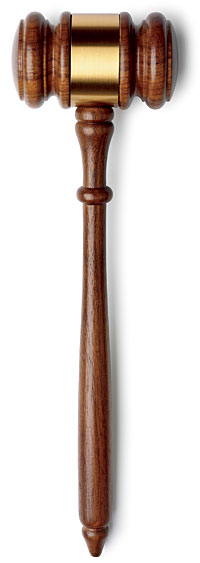
You’ve heard of Cynthia Brim, right? The 54-year-old Chicagoan made headlines last March when she was charged with misdemeanor battery for pushing one sheriff’s deputy and throwing her keys at another (a court-appointed psychiatrist declared her “legally insane” at the time). She has also racked up 18 years of near-universal negative ratings for performance at her job: judge for the Circuit Court of Cook County. Yet last November, nearly 64 percent of voters chose to retain her.
In fact, county residents voted to retain every single one of the 57 candidates on November’s circuit court ballot—including four judges deemed “not qualified” by most bar associations. This happens in nearly every judicial election around here: Since 1990, the retention rate has been 100 percent.
You already know part of the reason. Voting in judicial retention elections is like cramming for a test in a class you always skip: cribbing notes from someone who was there (in this case, the voting recommendations of the bar associations—all 11 of them) and trying to remember the answers when it comes time to pencil in all those arrows. “Staying informed is like a full-time job,” says Matthew Streb, a political science professor at Northern Illinois University.
But the bigger problem is that in Illinois, unlike in the majority of other states where judges get reelected, you don’t get to choose between the current judges—who have mostly been picked by the powerful ward and township committeemen in Cook County—and new candidates for the job. When jurists’ six-year terms are up, you simply get asked whether you want to retain them or fire them. Because most people don’t bother to vote in retention elections—or they just mark “yes” on a straight party line—even bad judges get electoral mulligans.
The irony of all this is that judicial retention elections—instituted by Illinois in 1964—were meant to combat the power of the political machine. Originally, they were the idea of Albert Kales, a law professor at Northwestern University, who observed how dominant parties controlled judicial appointments through partisan elections. Kales proposed that the governor select judges based on merit, using recommendations from a board of lawyers and nonlawyers, after which voters would decide whether to retain them. The process was meant to be a compromise, even though it was a sop to politics in its own way.
Isn’t there a better approach?
Yes—and it’s been happening in Colorado, says Elizabeth Monkus, a project director at the nonprofit Judicial Performance Commission of Cook County. In that state, an appointed committee (a mix of lawyers and nonlawyers) interviews judges, analyzes court data, and surveys everyone from litigants to social service workers. The result: detailed evaluations—published in a guide mailed to all Colorado voters—that compare judges not only to a universal standard but to other judges in the system. In the 11 election cycles since the program was created in 1988, ten judges have been voted out. “That system works really well,” says Monkus.
In Arizona, which adopted a similar procedure in 1992, the system has improved the judiciary by scaring bad judges away. “Rather than face the public humiliation of such a rating on the ballot and in the voter publicity pamphlet, these affected judges chose to retire,” a study of Arizona’s system found.
Could that happen here too? Chicagoans don’t scare easily. But it’s worth a try.
Photograph: DNY59/istockphoto


